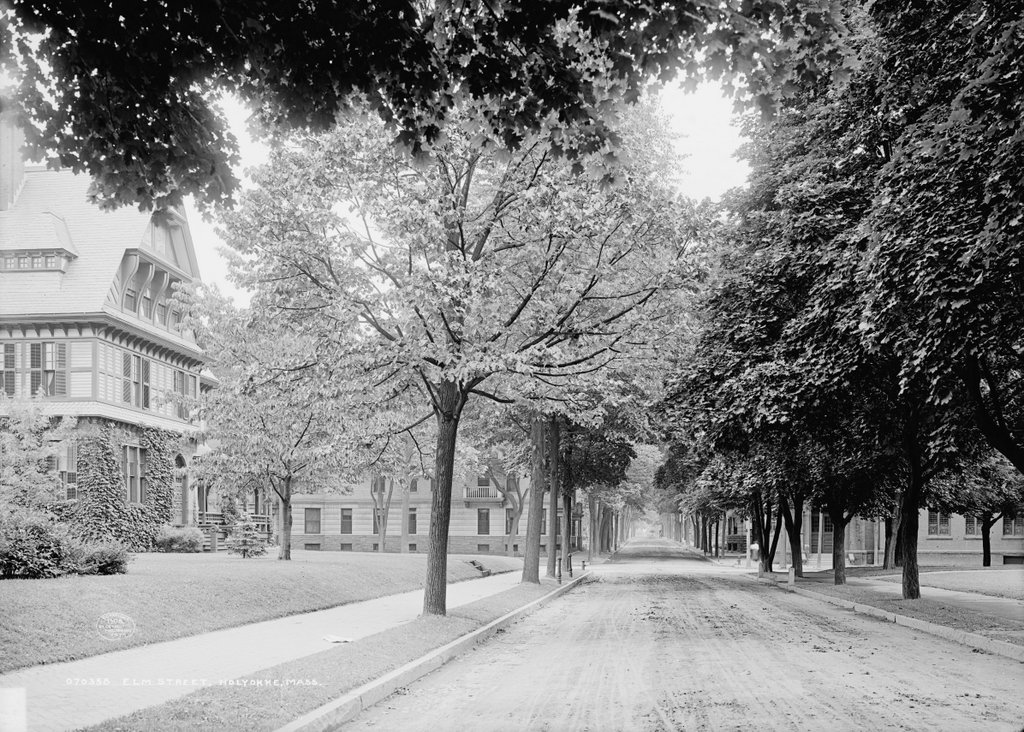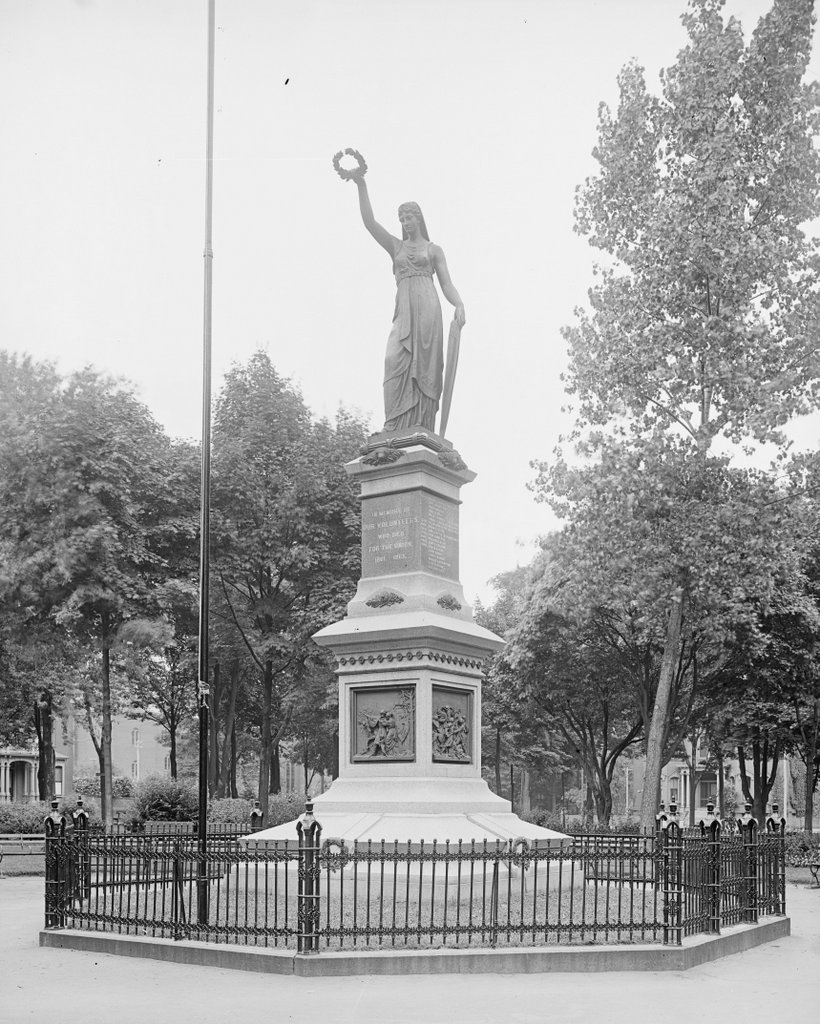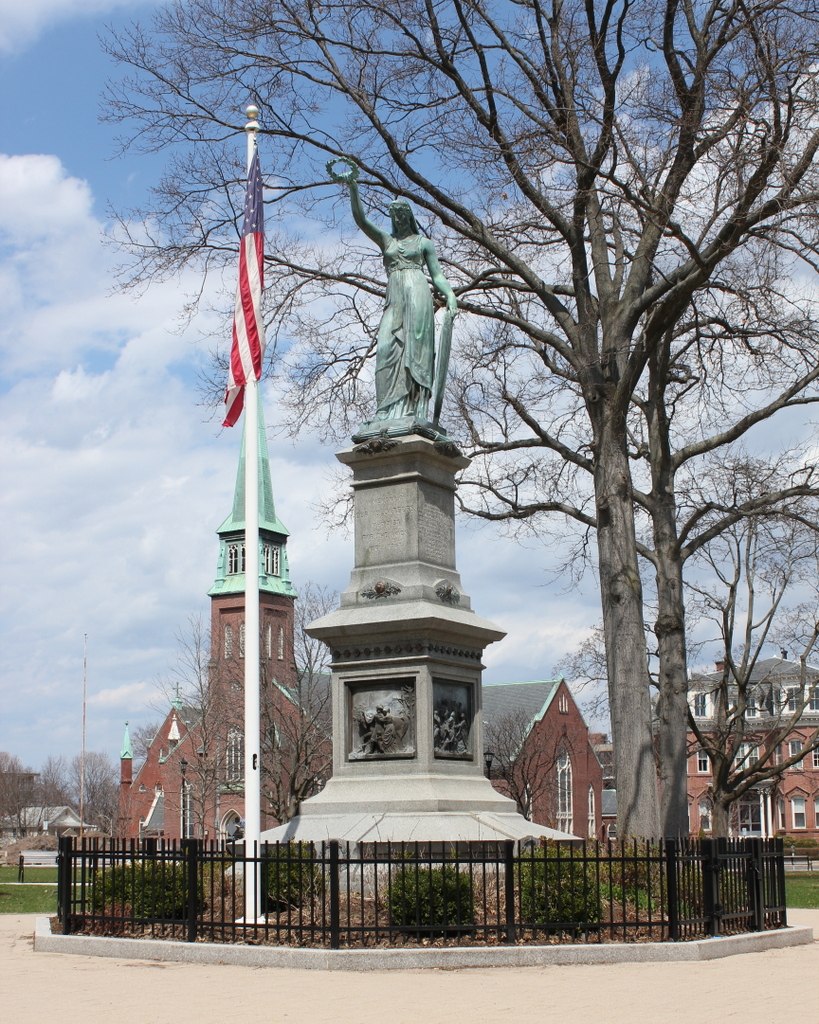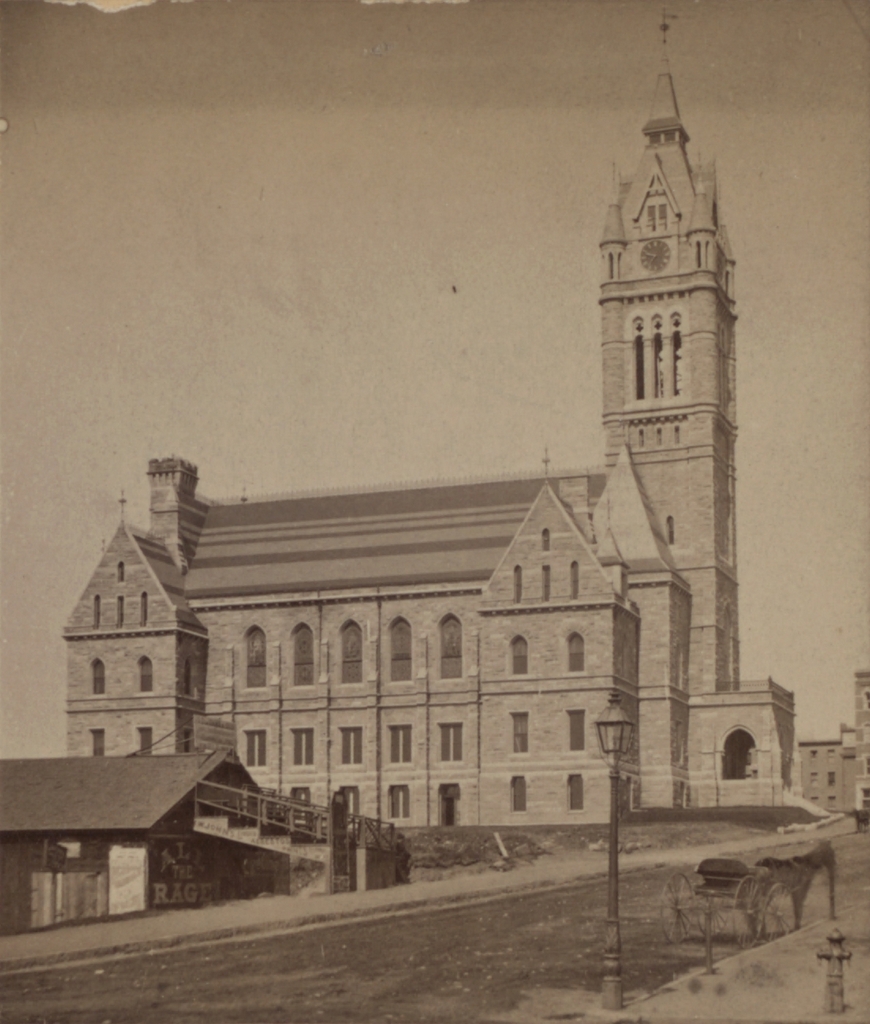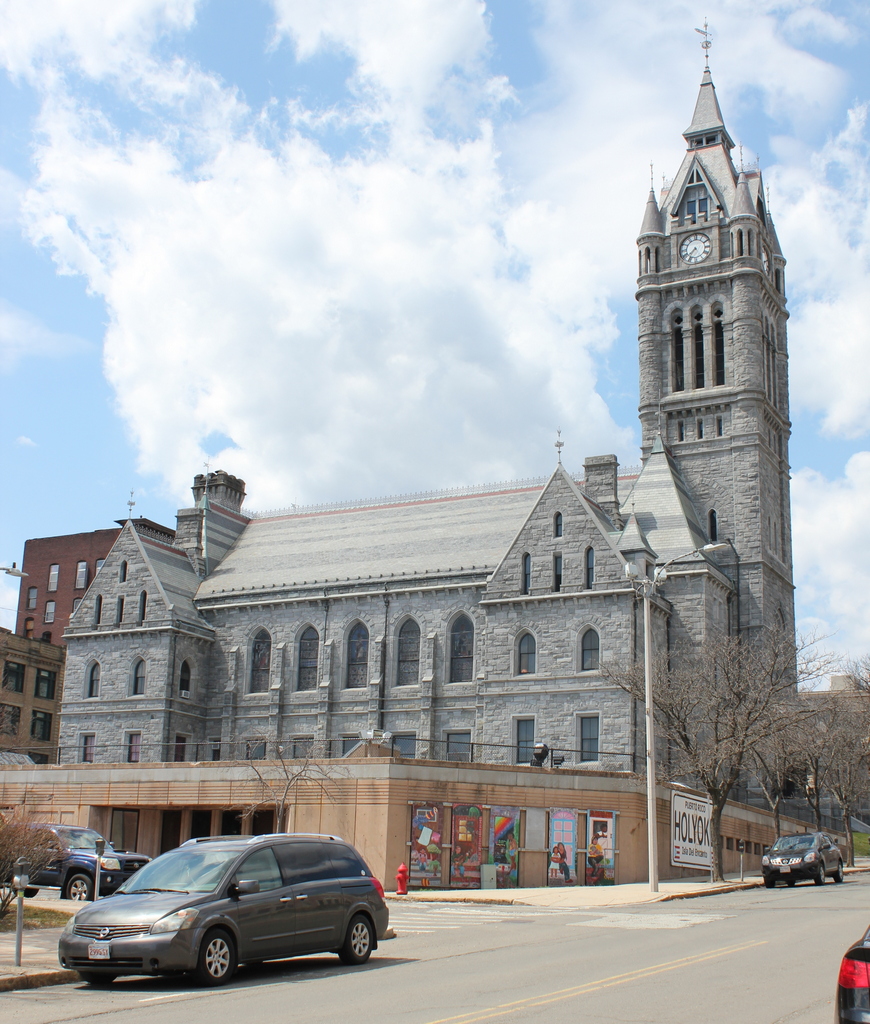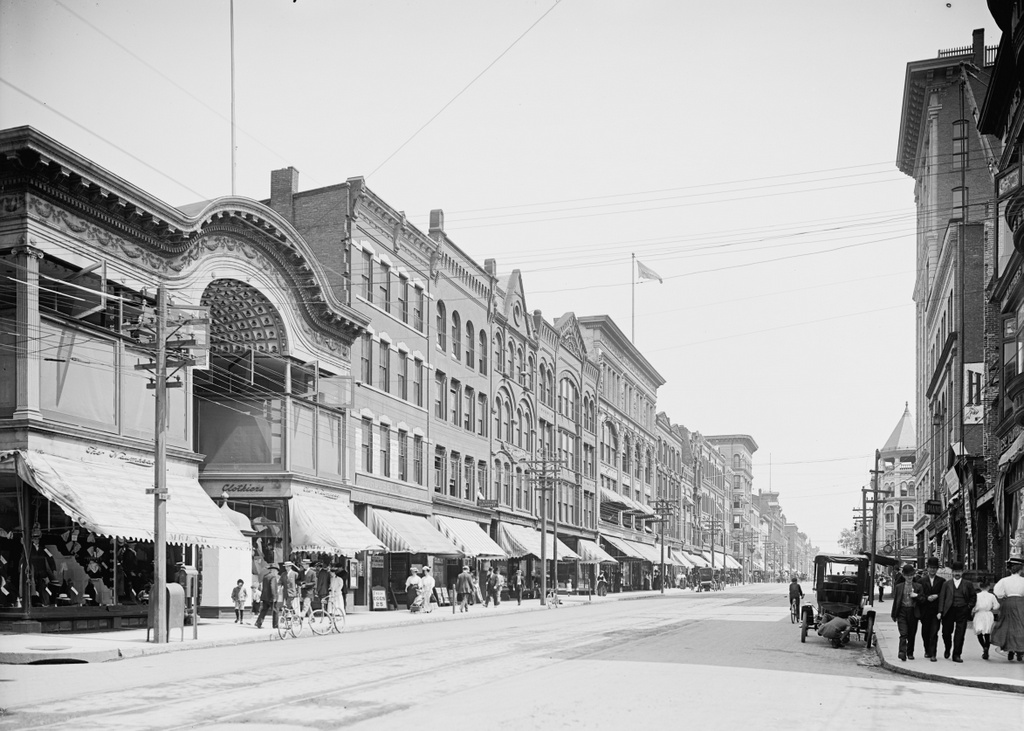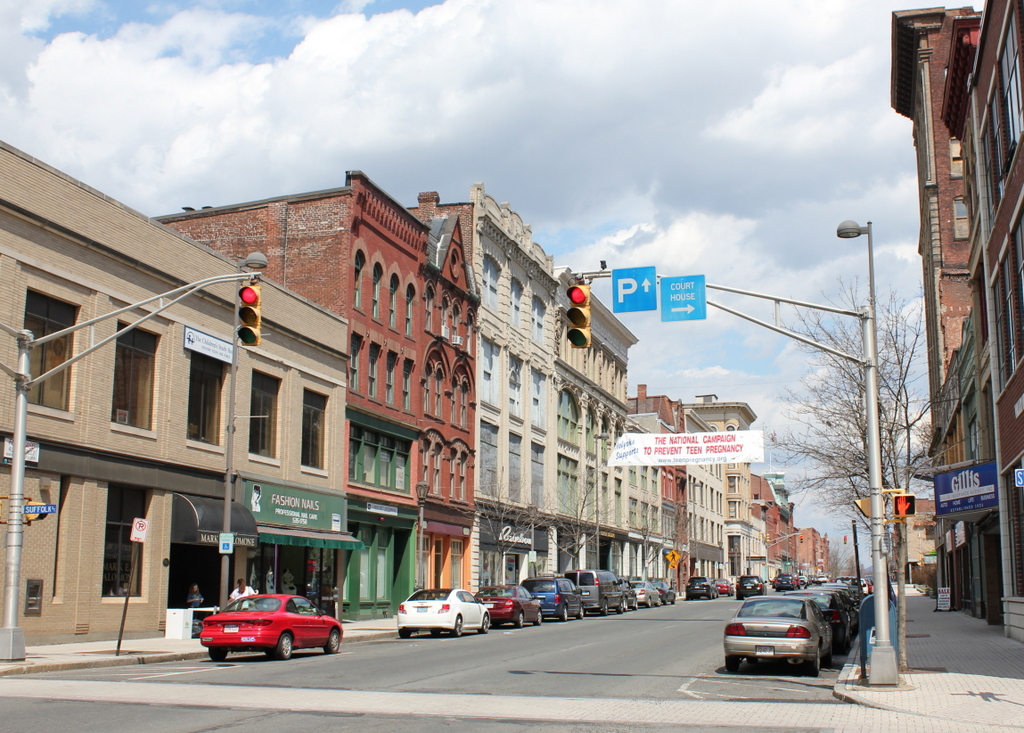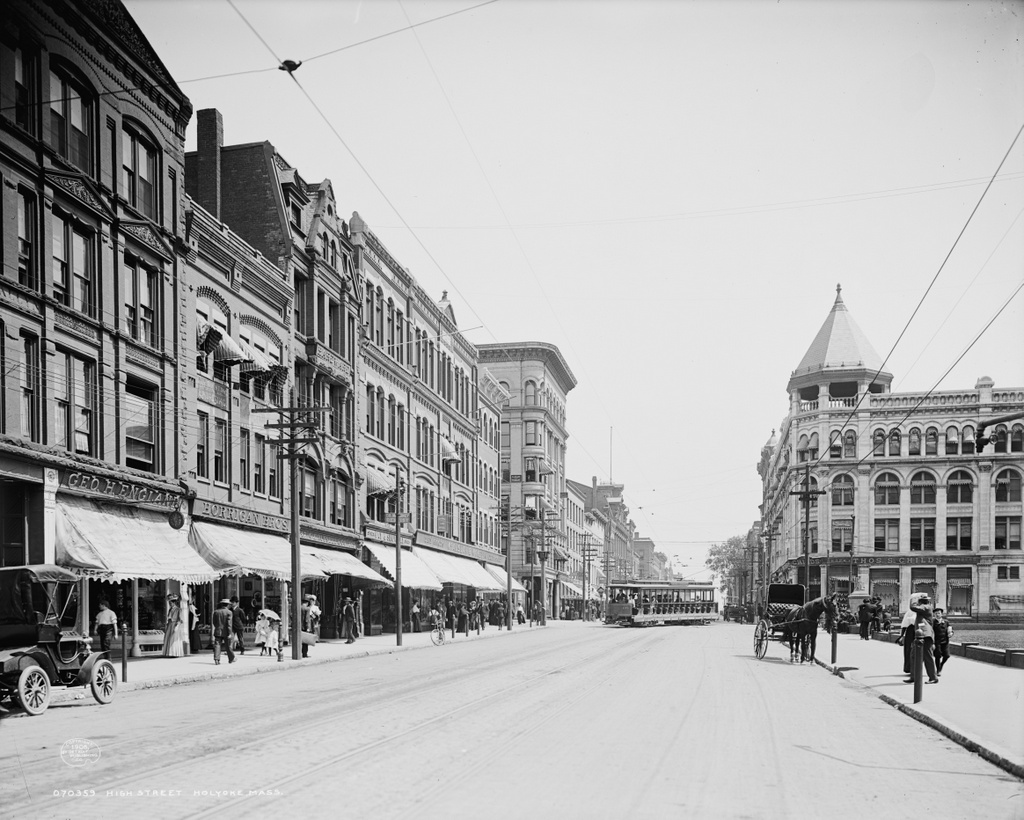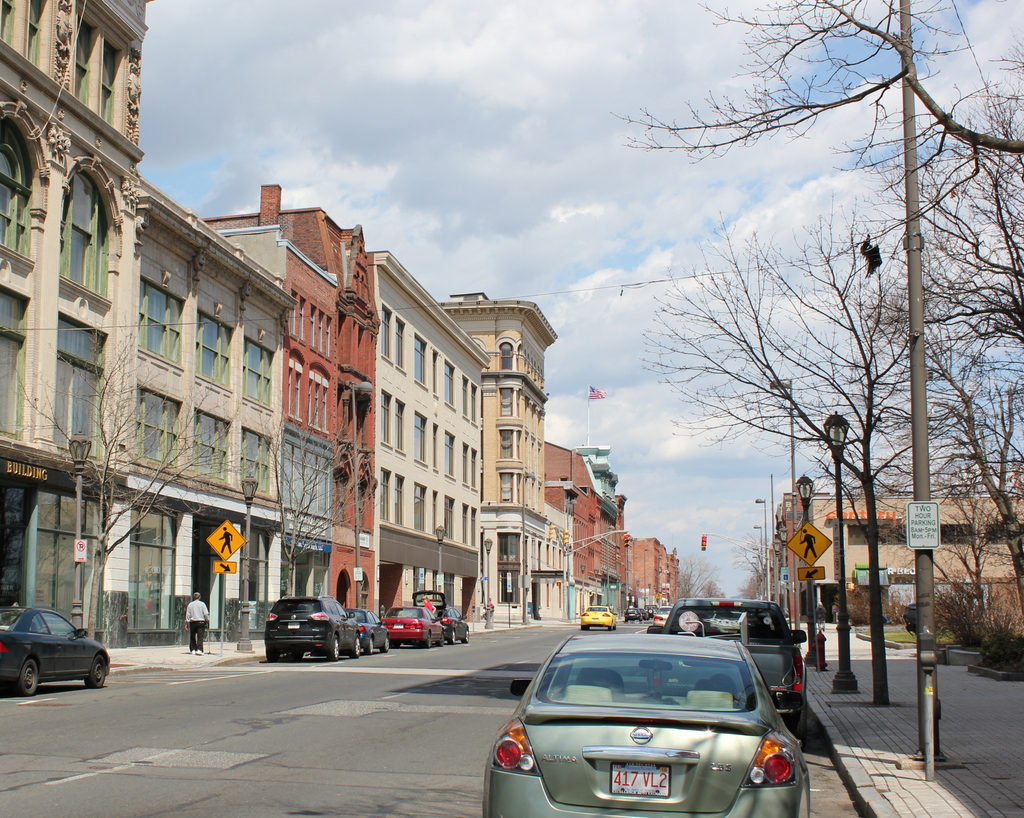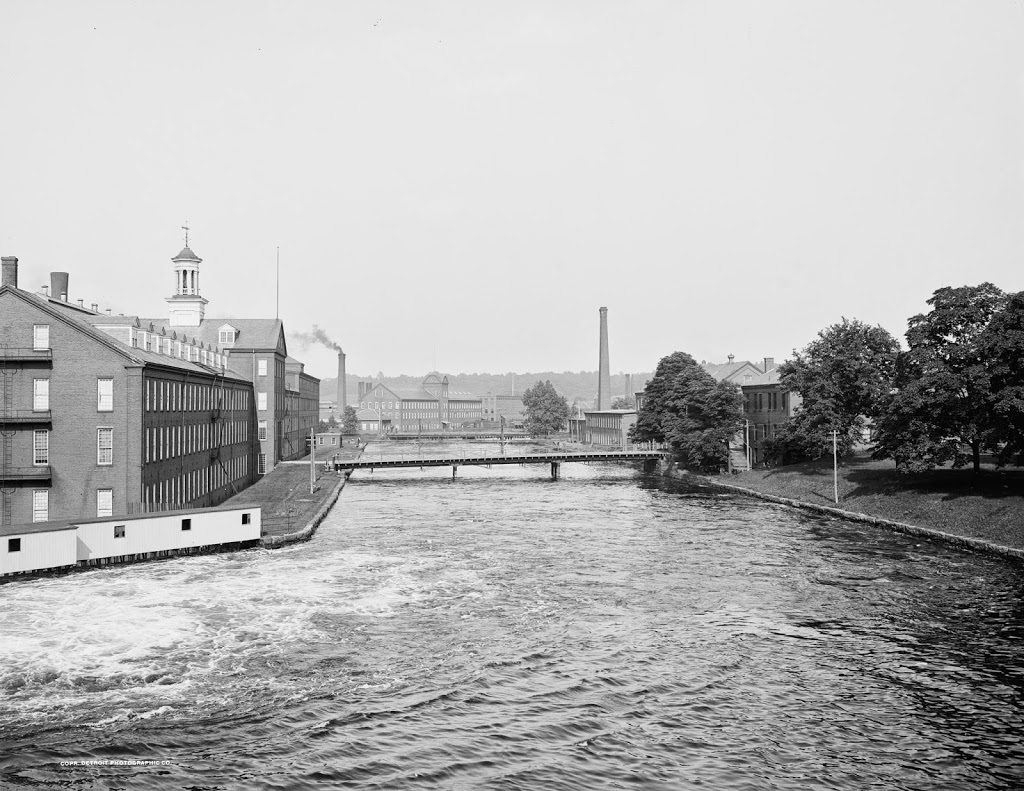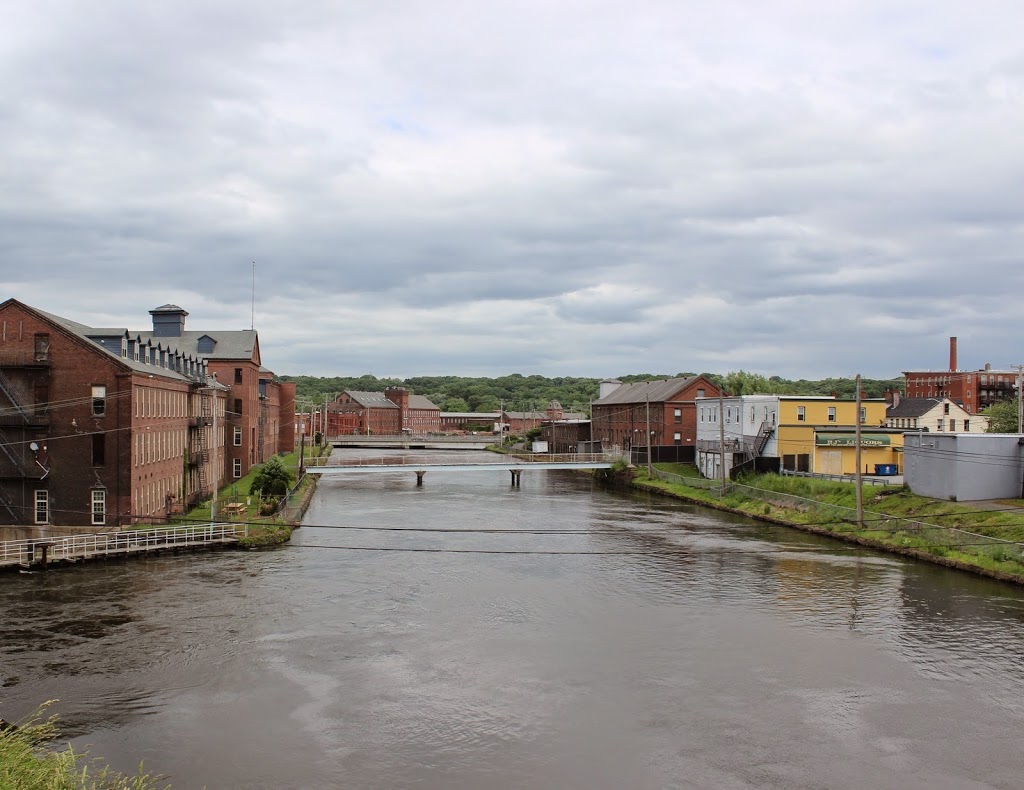Looking north on Elm Street toward Appleton Street in Holyoke, around 1908:
Elm Street in 2015:
The contrast in these two scenes illustrates what has happened in Holyoke over the past century. When the first photo was taken, the city was rapidly growing in population; by the 1910 census, it had over 57,000 residents, and the city was one of the world’s leading paper manufacturing centers. However, by the middle of the 20th century the factories began closing, and the population dropped. The 2010 census showed fewer than 40,000 residents, and Holyoke currently has the second lowest median household income level out of all 351 Massachusetts cities and towns. The house and the apartment building on the left-hand side of Elm Street are still there from the 1908 photo, but otherwise it is a very different scene today.

